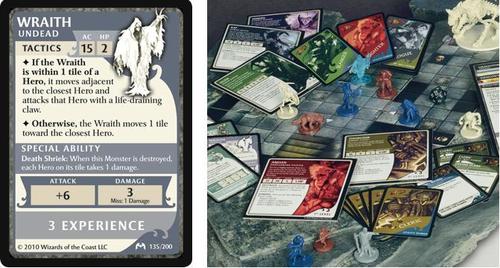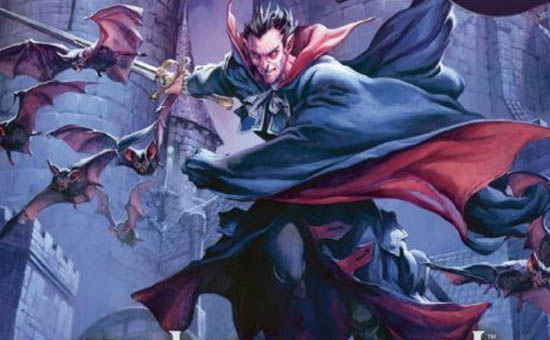Every once in a while, we like to cover good cooperative board games here at Co-Optimus. Just as the past few years have brought co-op to the forefront in video games, a large number of co-op board games have been released in this time period, too. We've covered a few here, namely Pandemic and Castle Panic. Today, we'll check out a hot new board game based on an iconic Dungeons & Dragons setting, Castle Ravenloft.
I was in 5th grade when I first took a trip to Castle Ravenloft. A small group of geeks like me had banded together to play Dungeons & Dragons during recess. Who needs kickball and swingsets when you can be a powerful wizard or mighty paladin invading the eerie castle of an ancient, specllcasting vampire with a tragic past? Ravenloft was so popular that it spawned an entire campaign setting and several novels, steeped in the traditions of gothic horror. And now, more than a quarter century after Count Strahd was first unleashed on the world, a board game set in his lair is the hottest board game around.
Castle Ravenloft is very much a lite version of the latest Dungeons & Dragons ruleset, combined with random tile placement and a fantastic set of plastic miniatures representing the players and the denizens of the castle. Five characters are available, each with differing attributes like Armor Class and Hit Points. The basic fantasy archetypes like dwarven clerics and elven wizards are all here, though a half-dragon fighter adds a nice bit of variety.

The party of adventurers will have to face kobolds, zombies, ghouls, giant spiders, and even more nasty creatures as they explore the castle. Thankfully, each character has lots of different ways to take them down. Some abilities are powerful enough to allow one use only, while others can be used at will. Each ability is represented by a card, so there's no flipping through the rulebook to find out how much damage Magic Missile does, for example. A very MMO-like twist is that even the fighter has many different choices, unlike the days of basic D&D. Each player starts with a treasure card, as well, and when monsters are defeated, more treasures can be found. Treasures might be items like magical weapons and armor, or simply minor effects that otherwise assist you in surviving.
One of the best parts of Castle Ravenloft is the fact that no Dungeon Master is needed. Everyone who wants to play can just choose a character and do so. This adds greatly to the feeling of cooperation, since players play against the game itself rather than one versus many. So how does all this work? Tiles are drawn at random and placed when characters are next to an unexplored edge of the map. Most tiles will spawn a monster, drawn from a stack of monster cards. The monster's miniature is placed, then the exploring player controls that monster according to the instructions on the monster card. Another benefit to this method of tile and monster placement is that the difficulty scales perfectly no matter how many players are involved.
